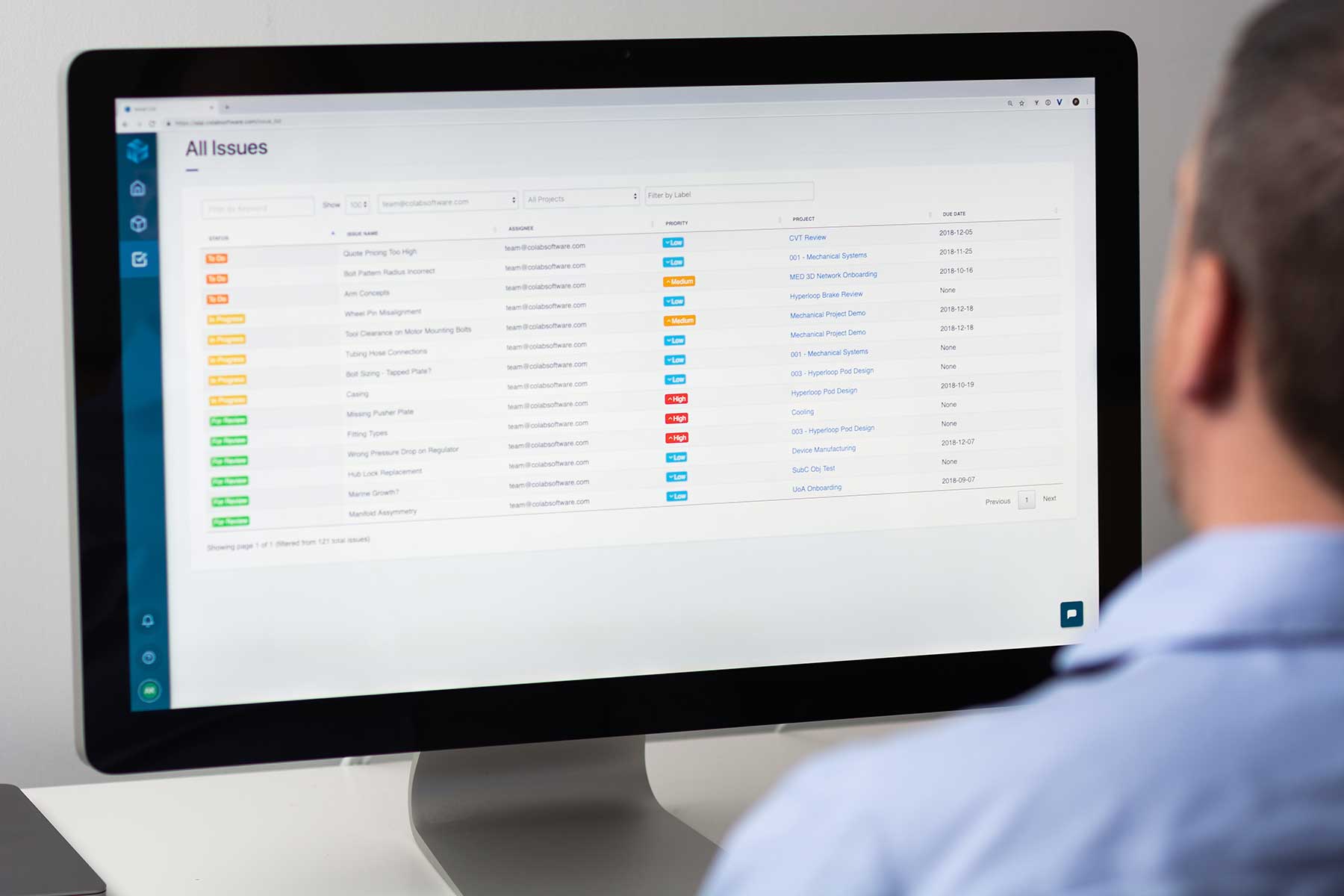Engineers Adam Keating and Jeremy Andrews were tired of using spreadsheets and screenshots to collab with teammates — so they launched a startup, CoLab, to build a better way.
The two met as undergraduates at Memorial University of Newfoundland, where they studied mechanical engineering together. While they were completing their last internships prior to graduating (Andrews at Tesla, Keating at health startup Reflexion Medical), they noticed that professional engineering teams were relying on clunky tools — namely spreadsheets and PowerPoint decks — to get collaborative work done.
“We experienced firsthand the downsides of piecing together critical design reviews by sending screenshots of designs back and forth over email,” Keating told TechCrunch in an interview. “It led to frustratingly long review cycles, endless admin work and issues slipping through the cracks, despite everyone’s best efforts.”
Being entrepreneurial types, Keating and Andrews decided to start a company, which they called CoLab, to build the mechanical engineering collaboration suite that they themselves would want to use. The company’s tools, which Keating says are now being used by teams at Ford, Johnson Controls and Schneider Electric, let engineers review design files, capture and track feedback and document issues from a single dashboard.
“Using CoLab, multiple engineers and cross-functional stakeholders can review designs together and build off one another’s feedback,” Keating, now CoLab’s CEO, said. “CoLab pulls together design discussions previously lost in emails, spreadsheets and notebooks into a platform that integrates back into enterprise systems like product lifecycle management, making it easier for engineers to focus on decision making with the right data available.”
CoLab stores customer design data, such as 3D models and engineering drawings, in its cloud. Built-in sharing tools allow engineers to send files to one or more suppliers while keeping select info, like feedback and comments, private.

AI isn’t currently a major part of the CoLab experience, but Keating says it will be in the next few months. CoLab plans to use its growing customer data — in an anonymized and privacy-preserving way, Keating pledges — to build AI models that help engineers make “more informed” decisions while automating routine tasks and admin work.
“CoLab has a large volume of user-generated natural language data — design feedback — that doesn’t always get captured in other enterprise systems,” Keating said. “As a result, CoLab can explain and analyze why designs evolve based on human insight. CoLab not only understands how a design changed, but also why it changed.”
In the meantime, Colab, which operates on a software-as-a-service model, appears to be doing just fine financially; Keating says that revenue has doubled in the past six months. He expects paid add-ons set to be released this year and next to boost profits even further.
CoLab today announced that it raised $21 million in a Series B funding round led by Insight Partners with participation from Y Combinator, Killick Capital and Pelorus VC.
“The $21 million, which brings CoLlab’s total capital to $40 million, was specifically raised with the intention of half of it accelerating the scale-up of the existing go-to-market motion and the other half being invested in bigger bets like AI,” he said. “Much of the investment will go into expanding the team after building a very efficient business in the past few years.”
CoLab aims to grow its workforce of 86 people, most of whom are based in Newfoundland, CoLab’s headquarters, to ~120 people by the end of the year as the company expands to Canada and the U.S.






